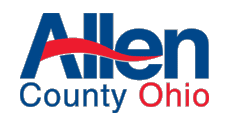
Shawnee Sewer Sub-District SECAP and SSO Remediation Program
 This is a capital improvement project that was developed to eliminate the Sanitary Sewer Overflow (SSO) throughout the Shawnee area. SSO’s are discharges of raw sewage from municipal sanitary sewer systems. SSO’s release untreated sewage into basements or out of manholes and onto city streets, playgrounds and into streams before it can reach a treatment facility. The major causes of SSO’s are Infiltration and Inflow (I/I), which is stormwater entering the sanitary sewer directly or through the soil or stone. The three main areas where I/I occur are sanitary sewer mainlines, manholes and laterals. Throughout this remediation project we have used Wade & Associates, Inc., out of Lawrence, Kansas, to conduct Manhole, Mainline and Lateral Inspections, Smoke and Dye Testing, and In House Inspections.
This is a capital improvement project that was developed to eliminate the Sanitary Sewer Overflow (SSO) throughout the Shawnee area. SSO’s are discharges of raw sewage from municipal sanitary sewer systems. SSO’s release untreated sewage into basements or out of manholes and onto city streets, playgrounds and into streams before it can reach a treatment facility. The major causes of SSO’s are Infiltration and Inflow (I/I), which is stormwater entering the sanitary sewer directly or through the soil or stone. The three main areas where I/I occur are sanitary sewer mainlines, manholes and laterals. Throughout this remediation project we have used Wade & Associates, Inc., out of Lawrence, Kansas, to conduct Manhole, Mainline and Lateral Inspections, Smoke and Dye Testing, and In House Inspections.
Manhole and Mainline Inspections were done to determine problematic areas where infiltration was occurring.


Lateral Inspections were completed by placing a portable camera within the lateral through a clean out. Once the camera has viewed the entire length of the lateral, all deficiencies are recorded and our office will give written notice to the property owners of repairs that need to be addressed. It is the responsibility of each property owner to make repairs to the laterals, outside of the road right-of-way, within ninety days.


In House Inspections determine whether your sanitary sewer service is installed in accordance to the Allen County Sanitary Engineering Department, Rules, Regulations, and Specification for proper connection to service laterals. In the event a violation is discovered, the property owner will be given 60 days to correct the violation.



Smoke Testing is used to detect sanitary sewer and storm sewer cross connections, unacceptable sanitary sewer laterals and downspout cross connection to sanitary sewer laterals.
Project Updates
February 26, 2003: The contract with Wade & Associates, Inc. has been completed for inspection of the Shawnee Collection System. Review of the Wade & Associates, Inc. report has caused the department to take a different approach to remediating the infiltration/inflow of stormwater into the sanitary sewer system. We feel as though a pilot study area needs to be developed to evaluate the methods and policies to be developed for elimination of stormwater. The pilot study area will be the Seriff Sub-Basin drainage area. An informational meeting will be scheduled with all affected property owners in the Seriff Sub-Basin drainage area to communicate the details of how we plan to remediate the stormwater. An evaluation of our success will be made by departmental staff at the conclusion of the pilot study. The method used in the pilot study will be a template for the balance of Shawnee Collection System. An informational meeting will be scheduled for all property owners in the balance of the Shawnee Collection System to detail the success of the pilot study, and how similar methods will be used for the rest of our Shawnee customer base. The Seriff Sub-Basin drainage area pilot study may take up to two (2) years to complete. If you have any questions, please contact our office. We will try to get this information out in the form of a mailing to all Shawnee customers.
July 2005: The manhole rehabilitation, and sanitary sewer rehabilitation has been completed in the Seriff Sub-Basin Pilot Project area. For more information on details of the Seriff Sub-Basin Pilot Project see the project status section of our web site. The department will begin sanitary sewer rehabilitation of our second pilot project area known as the Shawnee Meadows Pilot Project. The Shawnee Meadows Pilot Project area also has a separate project status location on our web site. The Board of County Commissioners, Allen County, Ohio signed Findings and Orders (Copy) with the Ohio Environmental Protection Agency requiring the elimination of the sanitary sewer overflows (sso’s) from the Shawnee and American/Bath Collection Systems. The anticipation of receiving Findings and Orders from the State of Ohio is the reason for expediting the Shawnee Collection System I/I Remediation Program.
August 2007: The Sanitary Engineering Department entered into formal agreement with the consulting firm of URS Corporation for the development of a System Evaluation Capacity Assurance Program (SECAP) for the Shawnee II sewer system. The SECAP includes a review of the current sewer system, a review of all improvements made to the system, and a review of all flow data derived from the sewer system. The SECAP also includes a provision to model the flow hydraulics of the sewer system. The data generated will be used to develop the needed improvements to handle the wet weather flow for both the sewer system, and the wastewater treatment plant.
April 2009: The Sanitary Engineering Department submitted the Final SECAP to OEPA per Resolution #337-09 that was passed on April 29, 2009.
June 2012: The Sanitary Engineering Department sent a request to OEPA for a five year extension of the Director’s Final Findings and Orders on June 28, 2012.
October 2012: On October 2, 2012, OEPA responds to the five year extension request to the Director’s Final Findings and Orders. OEPA will consider the extension based on the evaluation of additional information.



 COPYRIGHT © 2025 Allen County Commissioners
COPYRIGHT © 2025 Allen County Commissioners